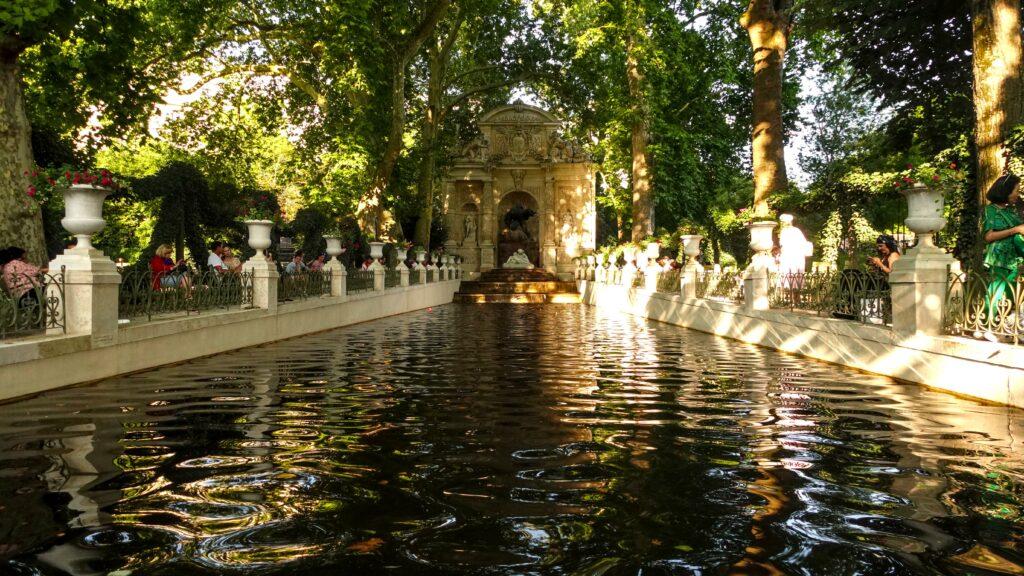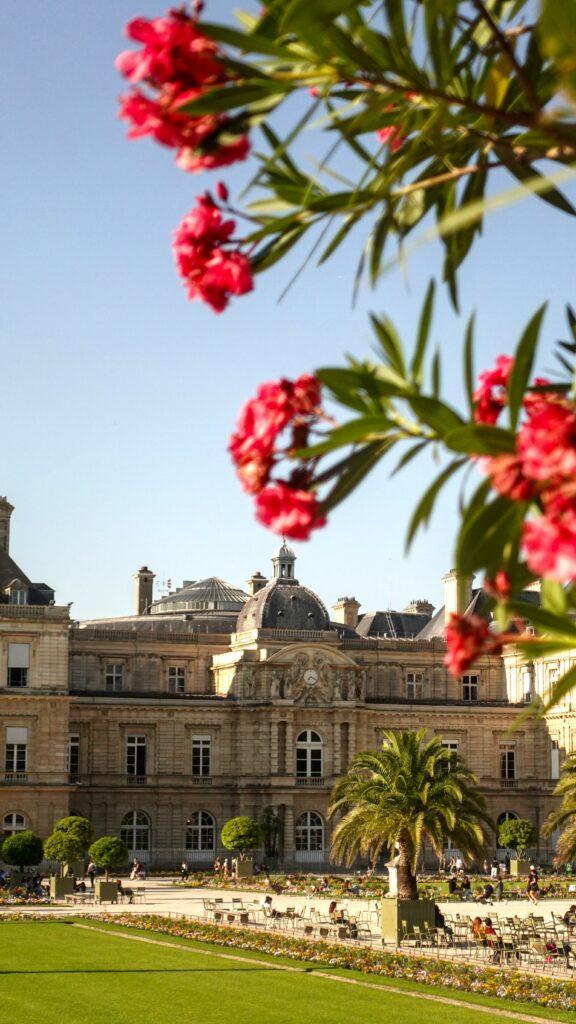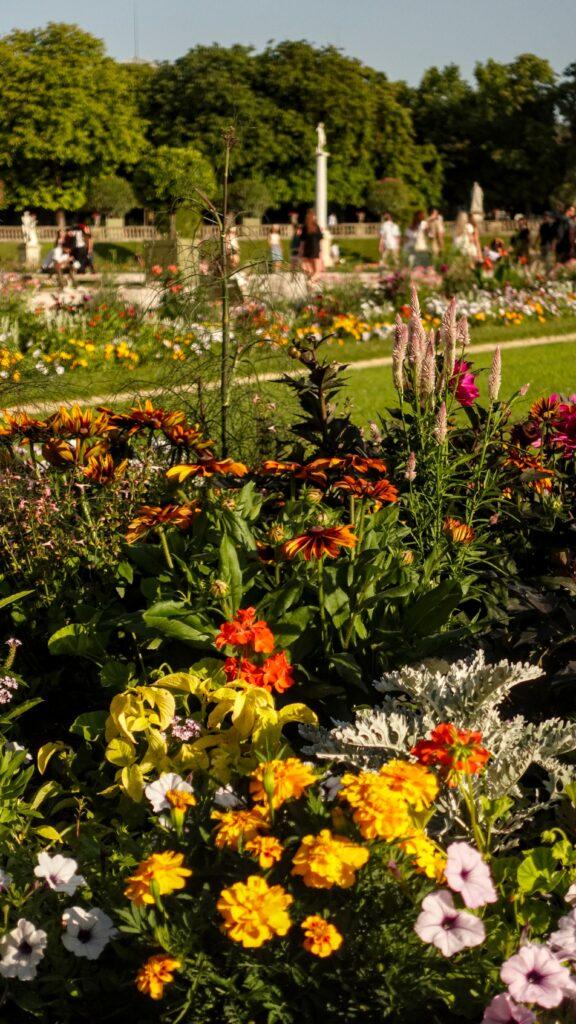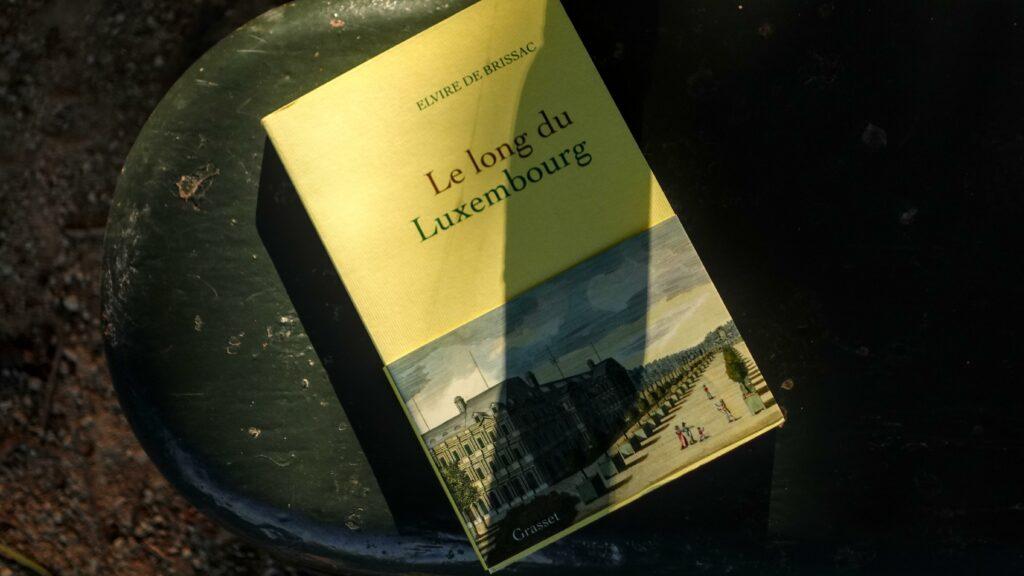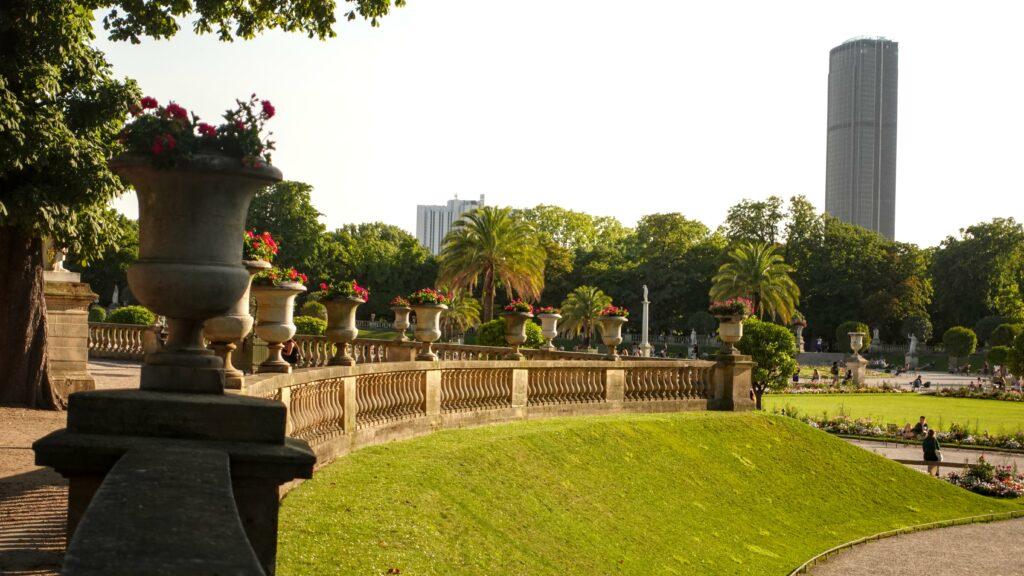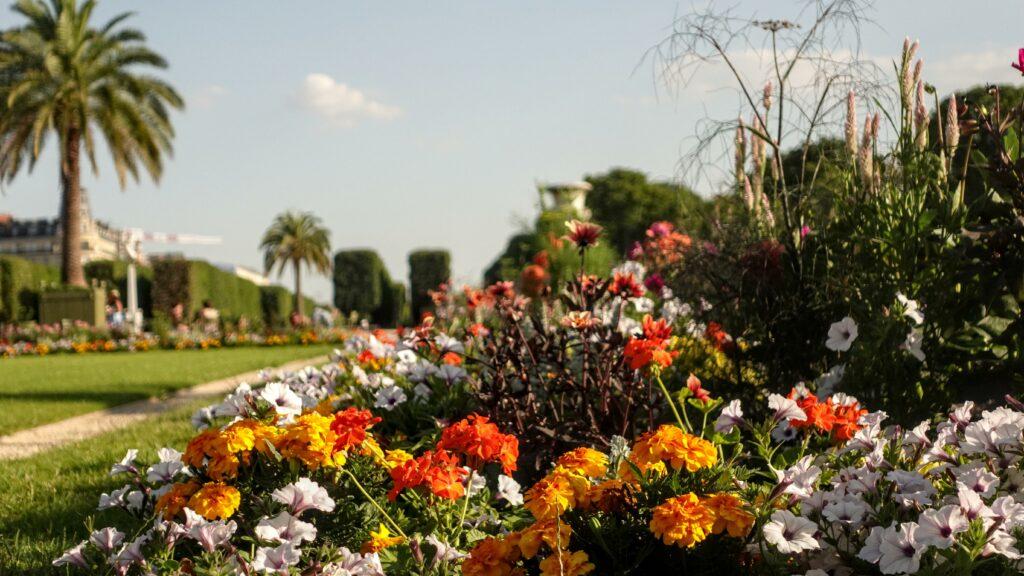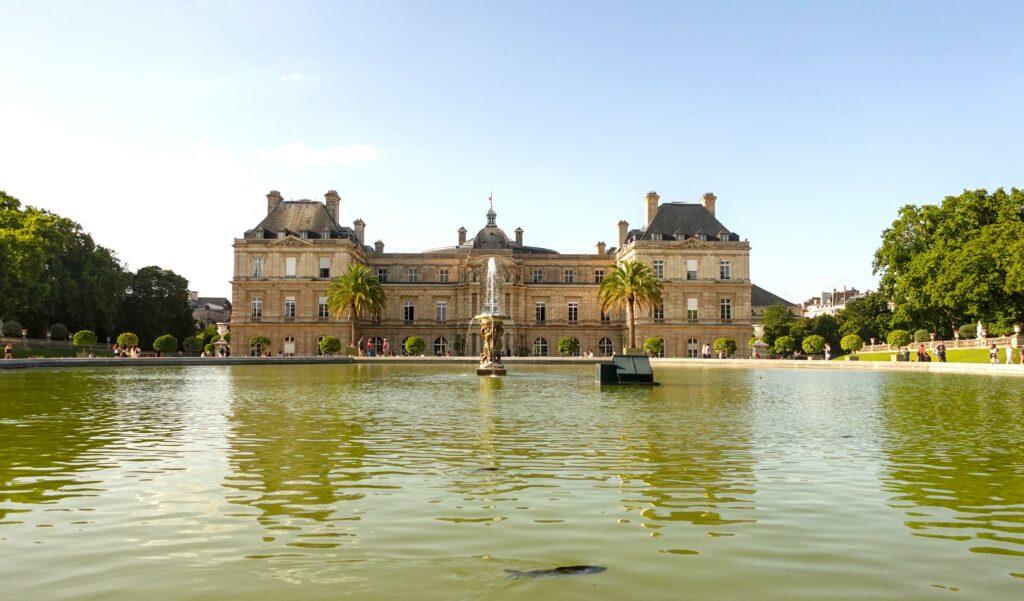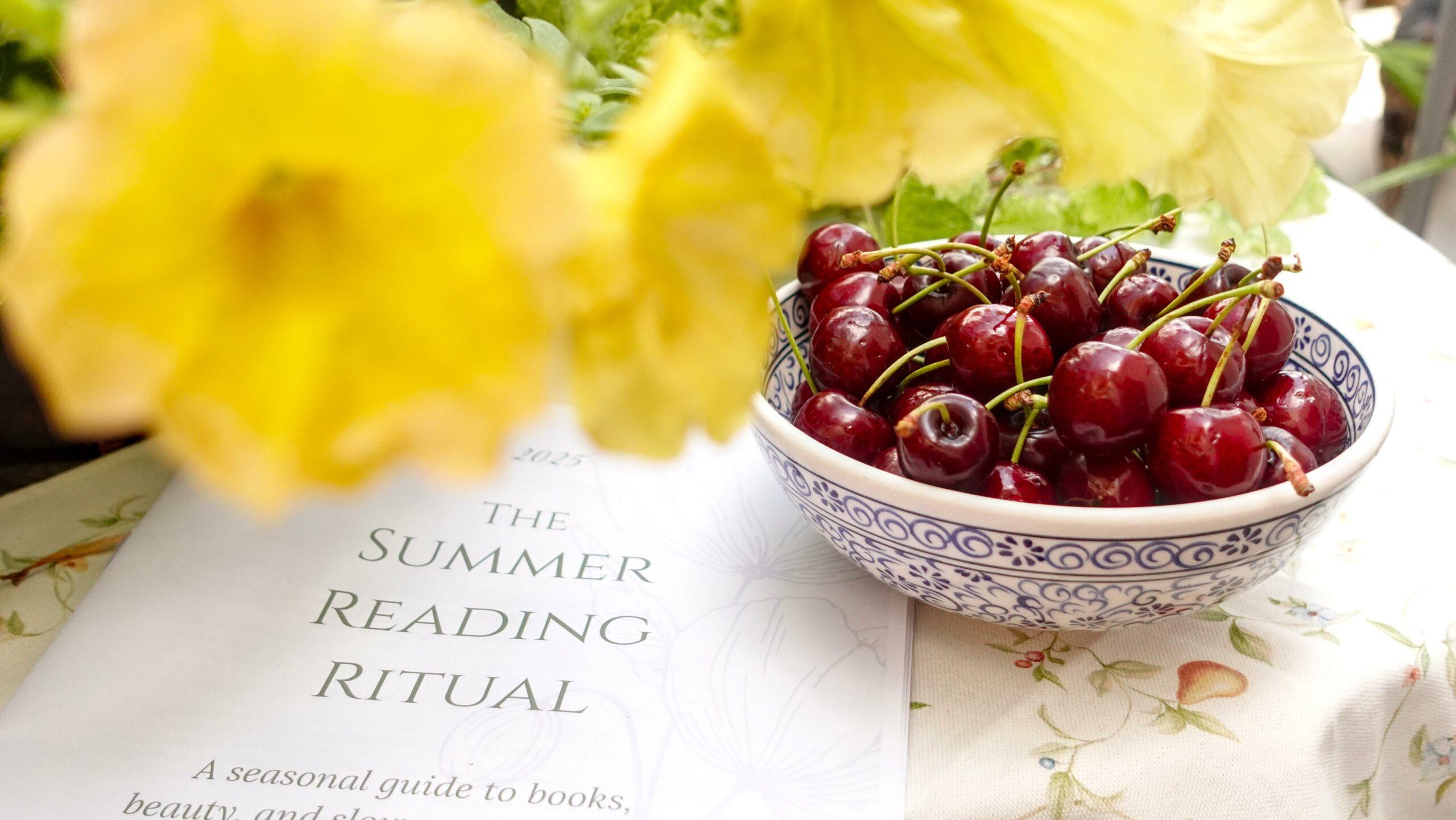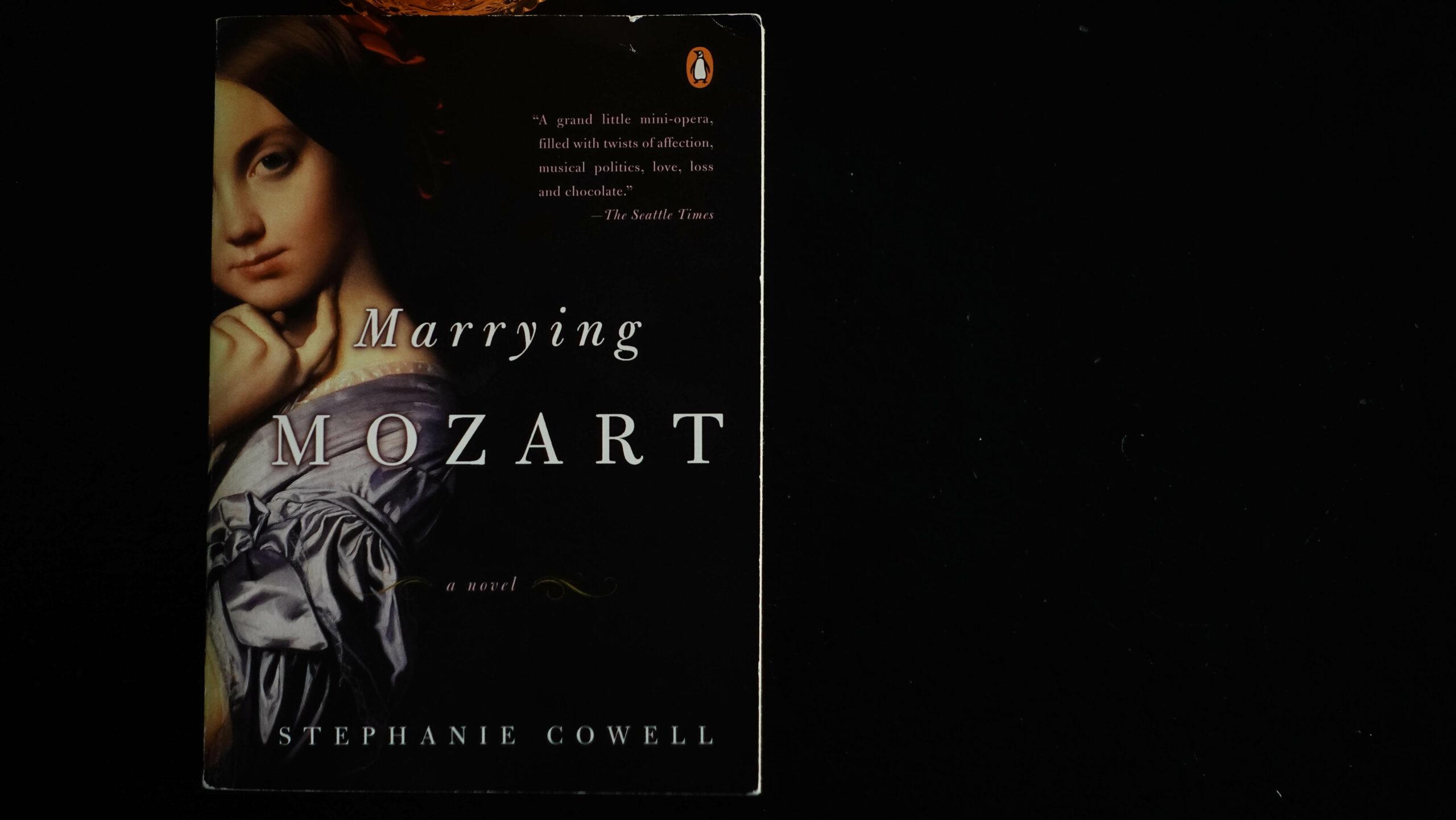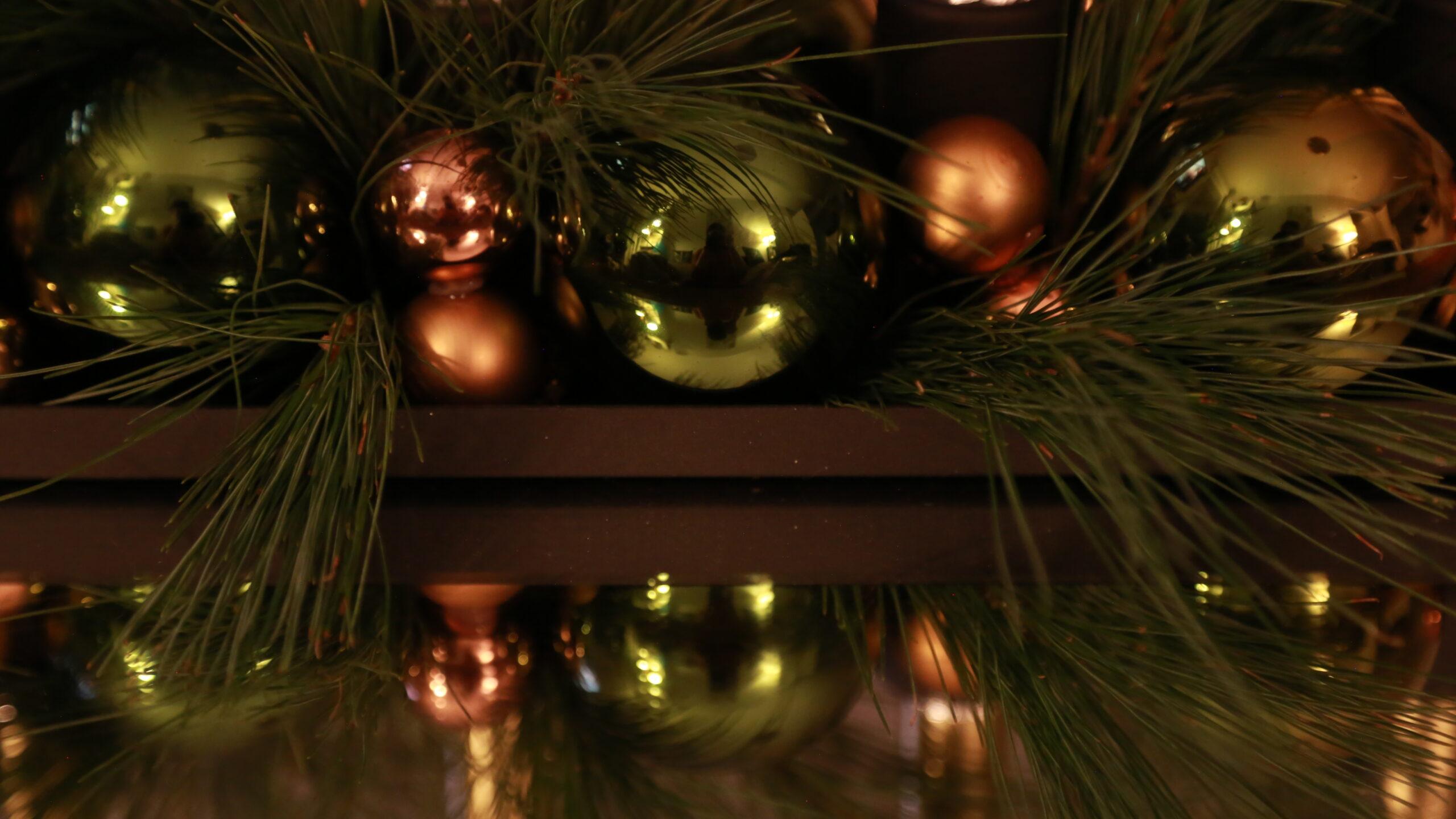A Book Walk with Elvire de Brissac
There’s something about Paris in July—sun-dappled streets, the gentle hush of the city in slow motion, and gardens in full, languid bloom. The Parisians are slowly beginning their exile to their summer spots : some in the countryside, others on the French Riviera or the very fashionable Basque coast, and others returning to one of the favourite Summer vacationing spots for the French : the Greek Islands.
This leaves Paris in the hands of tourists, which somehow shifts the perspective on the whole city for the few locals still here. It’s the perfect time to revisit favourite landmarks and let yourself be surprised by the subtle changes operated through time. This month’s Book Walk takes us to one of the city’s most storied green spaces, since I’m in the mood for garden talk this July : the Luxembourg Garden, on the ever-enchanting Left Bank. So pack a picnic or grab a decadent treat from the ice-cream vendor out front, and let’s go on a Book Walk together.
A Garden Full of Stories
We’re in the heart of the Rive Gauche, the Left Bank of the Seine, and right on the outskirts of the Latin Quarter, home of the historic Sorbonne. The university landscape of Paris is quite complex, but all you need to know in order to capture the atmosphere is that here we’re just a few steps away from the literature chair, the law university, the theater studies and the media departments. It is the land of the humanities, and you notice it all around you. Even if the Latin is long forgotten, the spirit of the scholars still lingers in lazy afternoon reads on the chaise-longues, in spirited conversations of life and philosophy, in every statue that watches over the gardens with the karmic duty of their historic patrons.
This is a place built from longing and vision, as Marie de Medicis, newly widowed after the assasination of King Henri IV, decided to build a new home for herself, in a city that didn’t quite feel like home. Her native Florence was still on her mind, and we need only remember the haven of art and beauty it represented during the Renaissance, to understand that gloomy Paris with its medieval appearance felt strange and inhospitable to her. She started acquiring parcel after parcel of the lands that now compose the domain and asked all of her experts to build something that would remind her of the Pitti Palace in Florence. This became her residence in 1625 while works on the building still continued, and commissioned the famous Marie de Medici cycle, a series of 24 paintings by Rubens depicting her life, that now hang at the Louvre.
She represents the beginning of the Palace and Gardens of Luxembourg (by the way, named after the Duke of Piney-Luxembourg who owned the initial parcel, not after the state). But these alleys saw the daily promenades of many famous women, my favourite of them all being the Duchess of Montpensier known as La Grande Mademoiselle. One of the greatest heiresses in history who refused a string of proposals from various members of European ruling families, she scandalised the court of France when she fell in love with an unsuitable man, and died unmarried and childless in what I consider to be one of the great acts of rebellion of a woman in the 17th century. Her funeral is marked by a somewhat gore event, though not without a hint of humour, seen at the time as a last joke of La Grande Mademoiselle. I won’t go into detail here, but you can find more in her biography written by none other than Vita Sackville-West : Daughter of France; the life of Anne Marie Louise d’Orléans, duchesse de Montpensier.
My bookish promenade
My companion for this literary stroll is Elvire de Brissac, novelist and noblewoman, whose book Le Long du Luxembourg has been both a discovery and a reminder, bringing me back to my student years.
This isn’t historical fiction, nor is it a classic history book. It’s something more intimate and atmospheric: an ode to a place and its past, told through anecdotes, personalities, and quiet observations as she walks alongside the ghosts of centuries. It reads like a long afternoon conversation. You follow Elvire’s musings as she brings the palace and gardens to life—from Marie de Médicis and the grandeur of the 17th century to literary flâneurs and revolutionaries. If you’re a history junkie, you’ll find plenty of treasures. But I chose to read it differently: not as a scholar, but as a passerby. A mere mortal, as if I were walking the grounds with Elvire herself, her voice beside me, pointing things out, offering little stories—some of which I forgot the minute she finished them, but many that stayed and colored my afternoon.
She painted a picture that brought historic characters to life : through Elvire’s eyes, the gardens become a symphony of layered lives—aristocrats, poets, children at play, soldiers in wartime. It’s not a linear tale. It meanders like a garden path.
Seeing Paris Differently
As the sun sets behind the trees and statues, I’m reminded why I created this series. Some books don’t just stay on the page. They whisper to you, tug at your sleeve, and send you outside. They invite you to walk and see—to see your city, or someone else’s, through different eyes. Elvire de Brissac has done just that.
Speaking of summer afternoons and the slow, contemplative pace of the season—if you’re looking to create your own literary rituals this summer, I’ve put together a special guide just for this. The Summer Reading Ritual is my gift to fellow book lovers who want to savor these long, golden days with intention. Inside, you’ll find curated booklists for dreamy afternoons, gentle seasonal rituals to pair with your reading, and ideas for creating those simple, joyful moments that make summer reading feel truly magical. Whether you’re planning lazy garden picnics like this one or cozy indoor escapes, this guide will help you craft your own bookish summer sanctuary. You can download it for free by clicking HERE—it’s my way of sharing the slow, beautiful approach to summer reading that makes these months so special.
And so, this Parisian afternoon in 2025, I wandered through the Luxembourg Gardens, not alone, but in the company of queens, philosophers, and a novelist who saw the world as a living story. The light filtered through the chestnut trees just as it did for Marie de Médicis centuries ago, and the same gravel crunched beneath my feet as it once did for La Grande Mademoiselle during her rebellious promenades.
There’s something profoundly moving about walking through a place where literature and life have intertwined for so long—where every bench holds the possibility of a new story, every statue whispers of the lives it has witnessed. This is what I love most about literary wandering: the way a single book can transform a familiar space into something entirely new, layered with meaning and memory. The Luxembourg Gardens will never look quite the same to me again, and I wouldn’t have it any other way.
Until next time, enjoy your reading and your bookish explorations !
Have a look at the photo gallery of my afternoon spent in the Jardin du Luxembourg, by clicking HERE.
Written by Alexandra Poppy
Writer, reader & curator of The Ritual of Reading
I’m Alexandra, the voice behind The Ritual of Reading. Somewhere between a stack of novels and a half-finished pot of tea, I keep finding traces of the life I want to live—slower, richer, filled with stories. The Ritual of Reading is where I gather what I love: books that linger, places with a past, and rituals that make ordinary days feel a little more meaningful. I write from Paris, where elegant bookshops and old-fashioned cafés offer endless inspiration—and I share it here, hoping it brings a spark to your own days, too.

